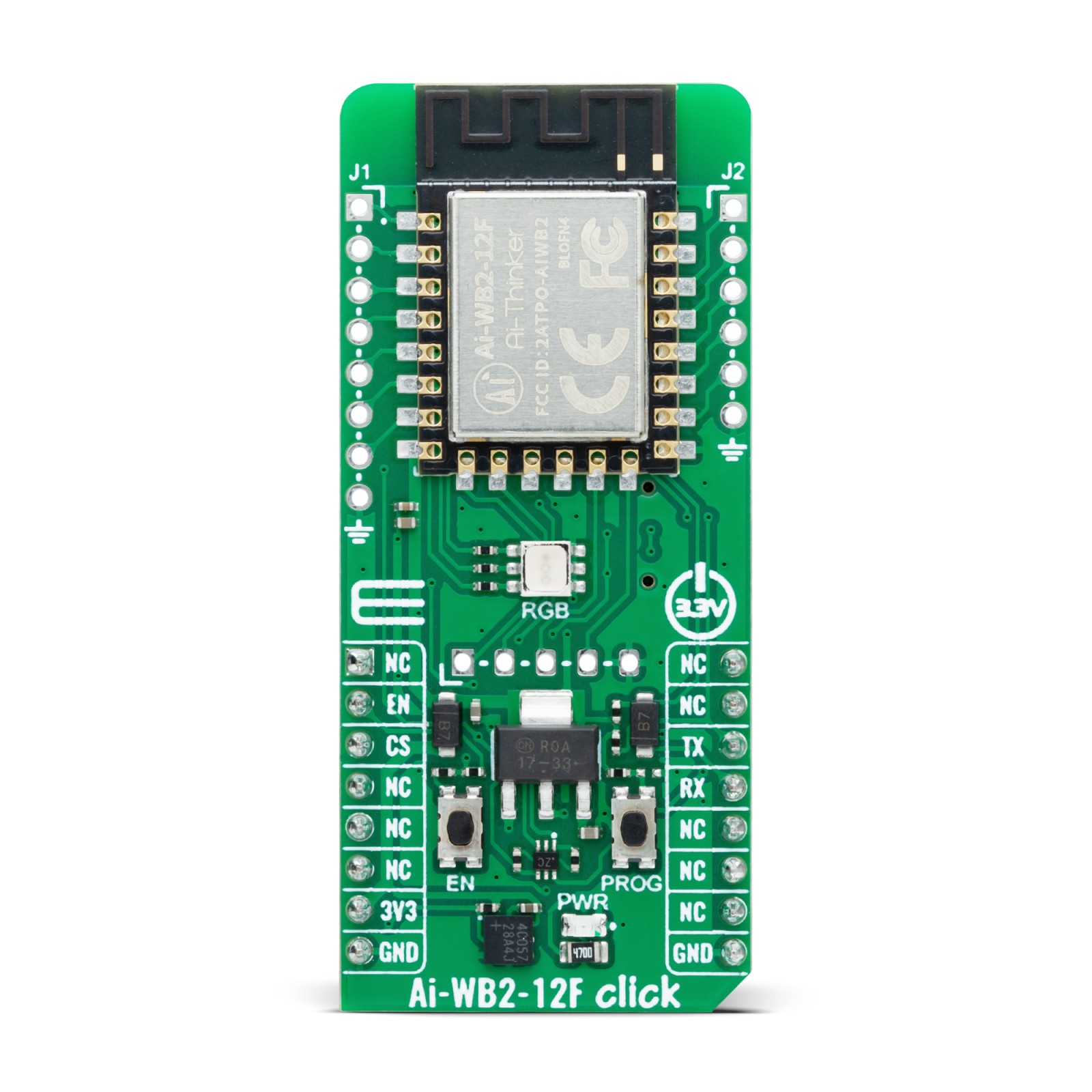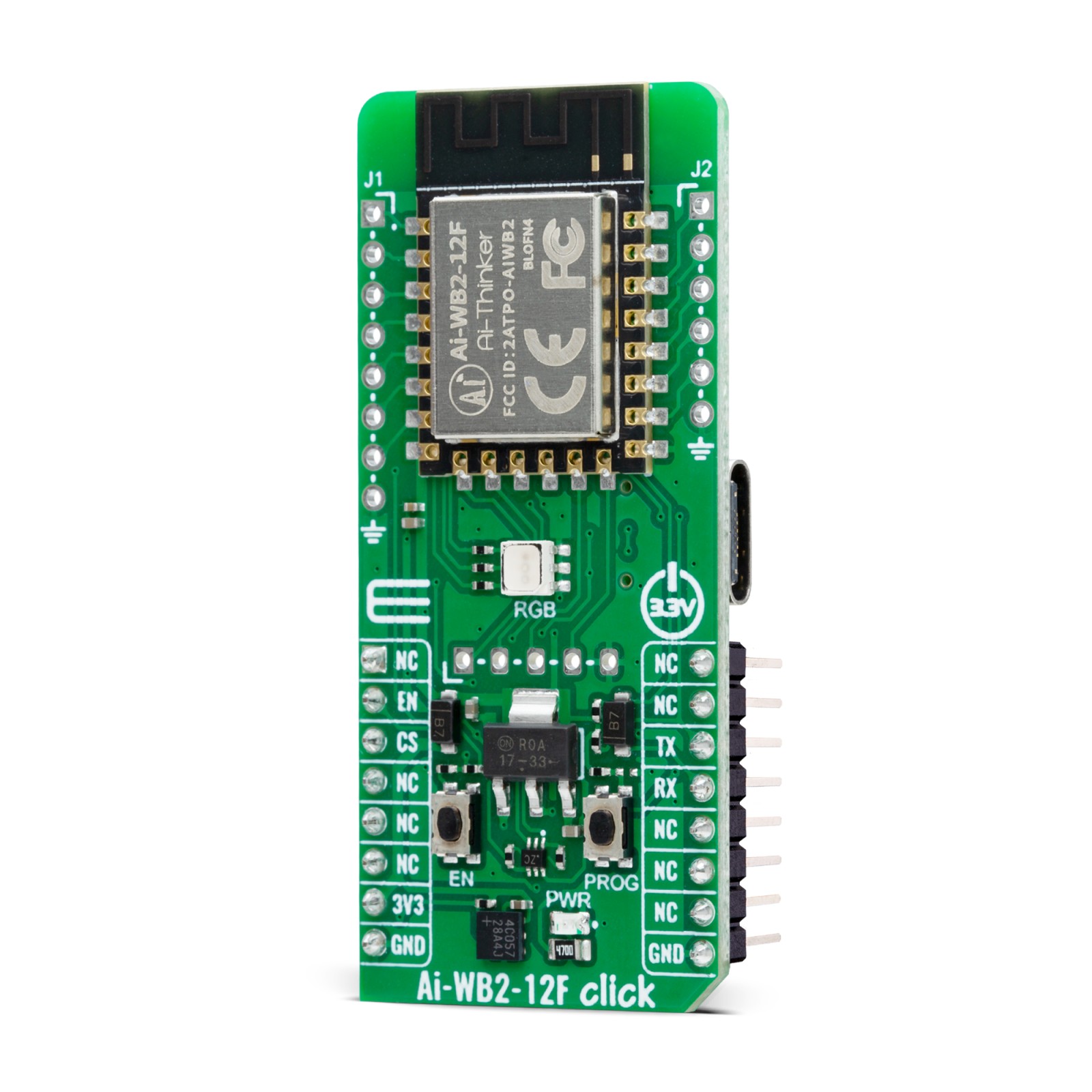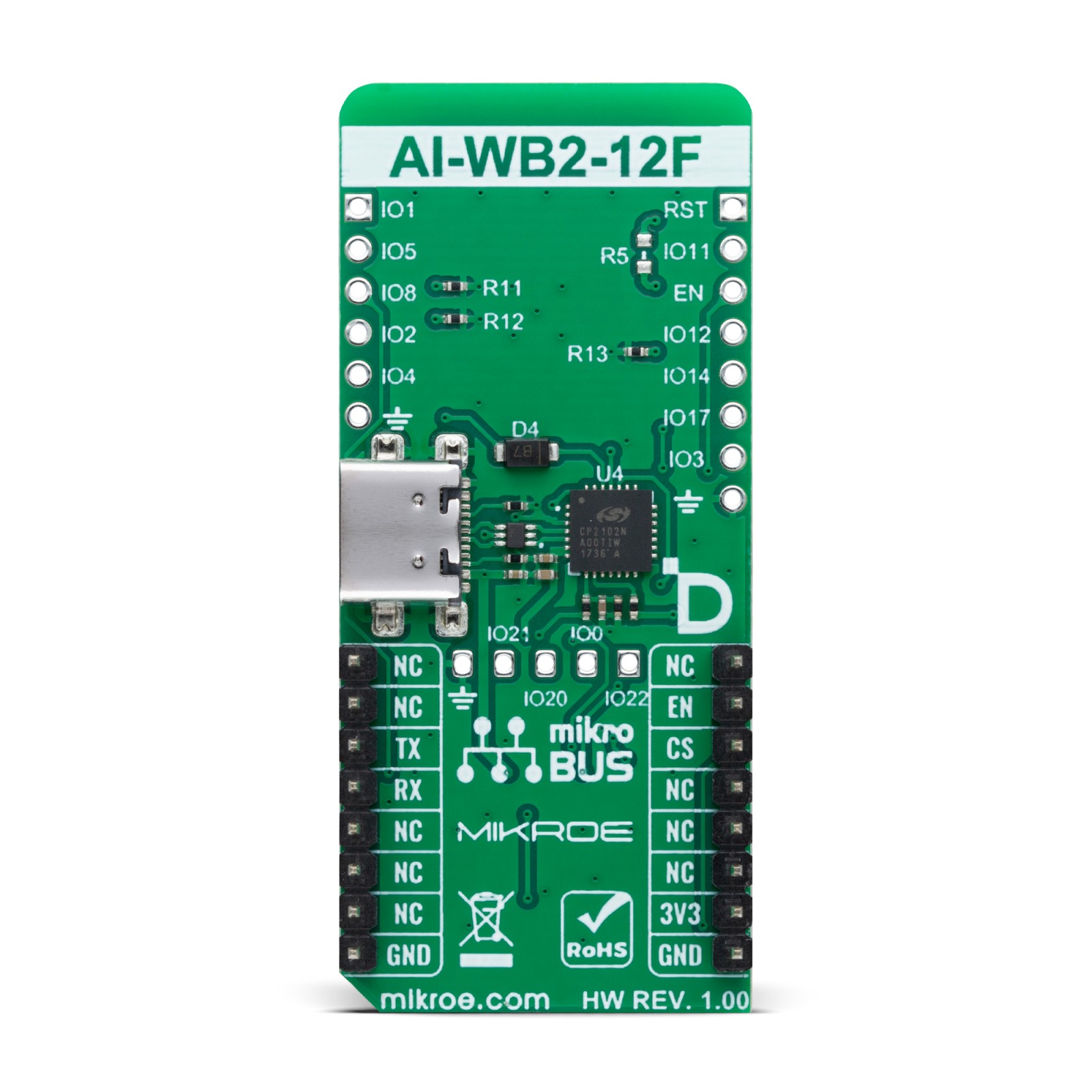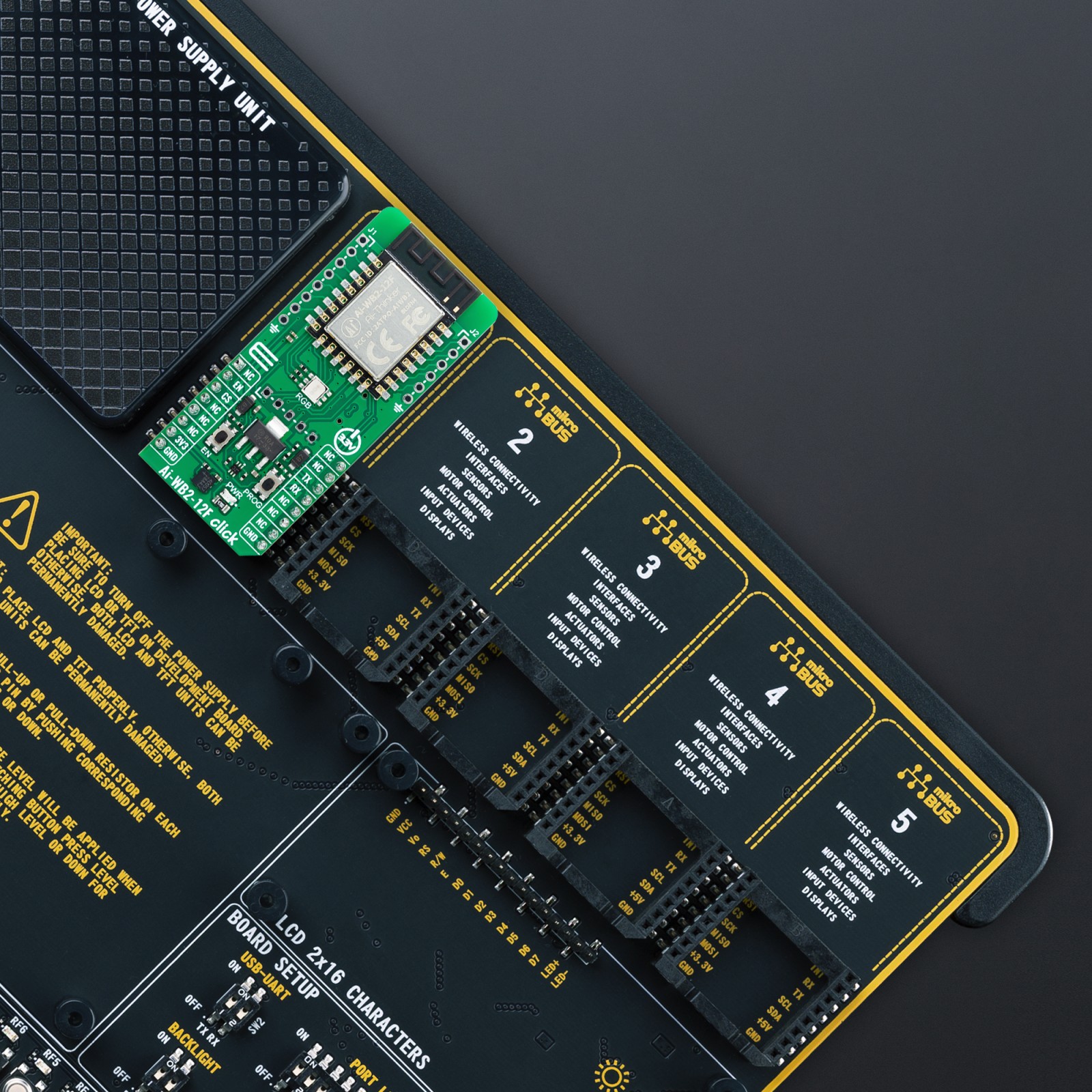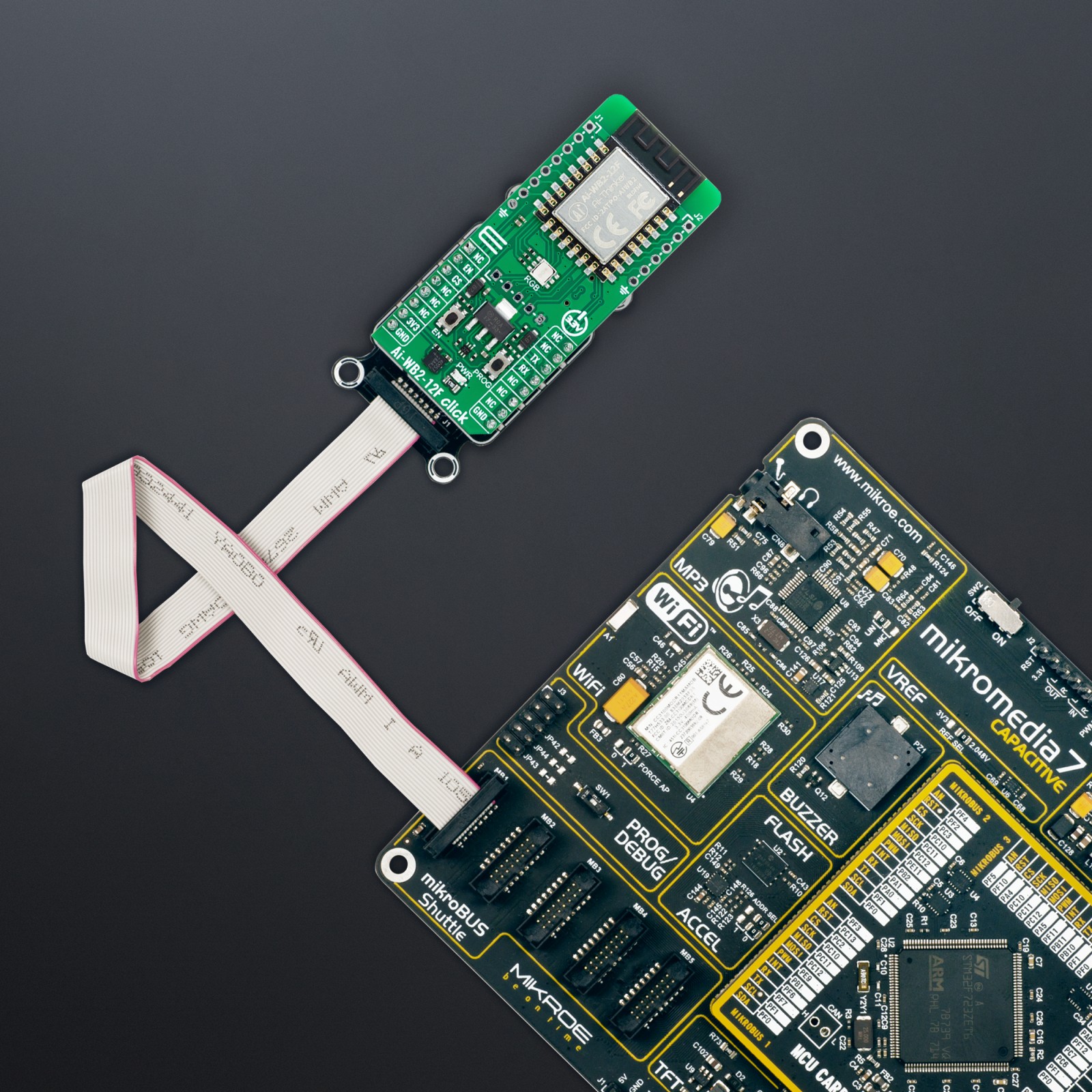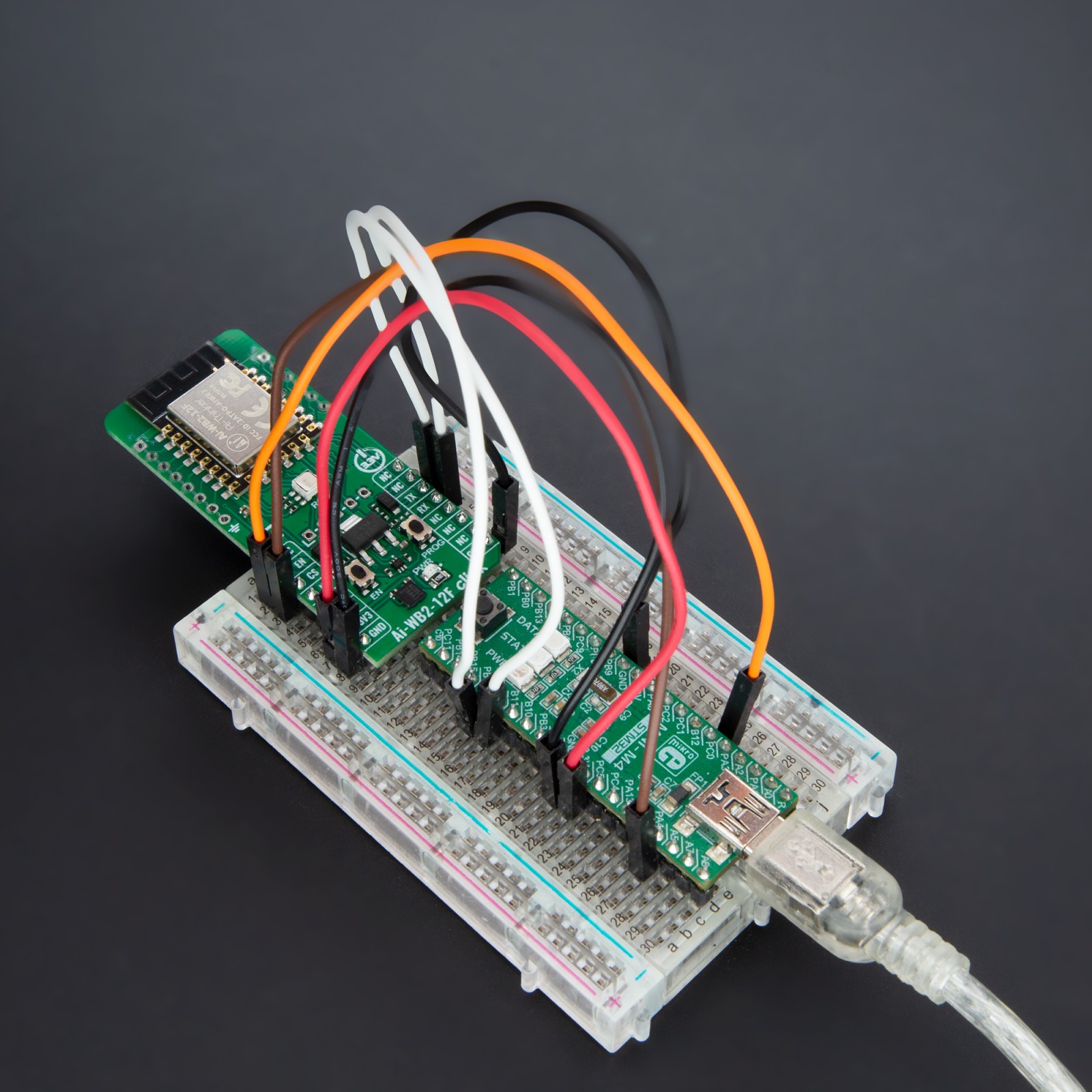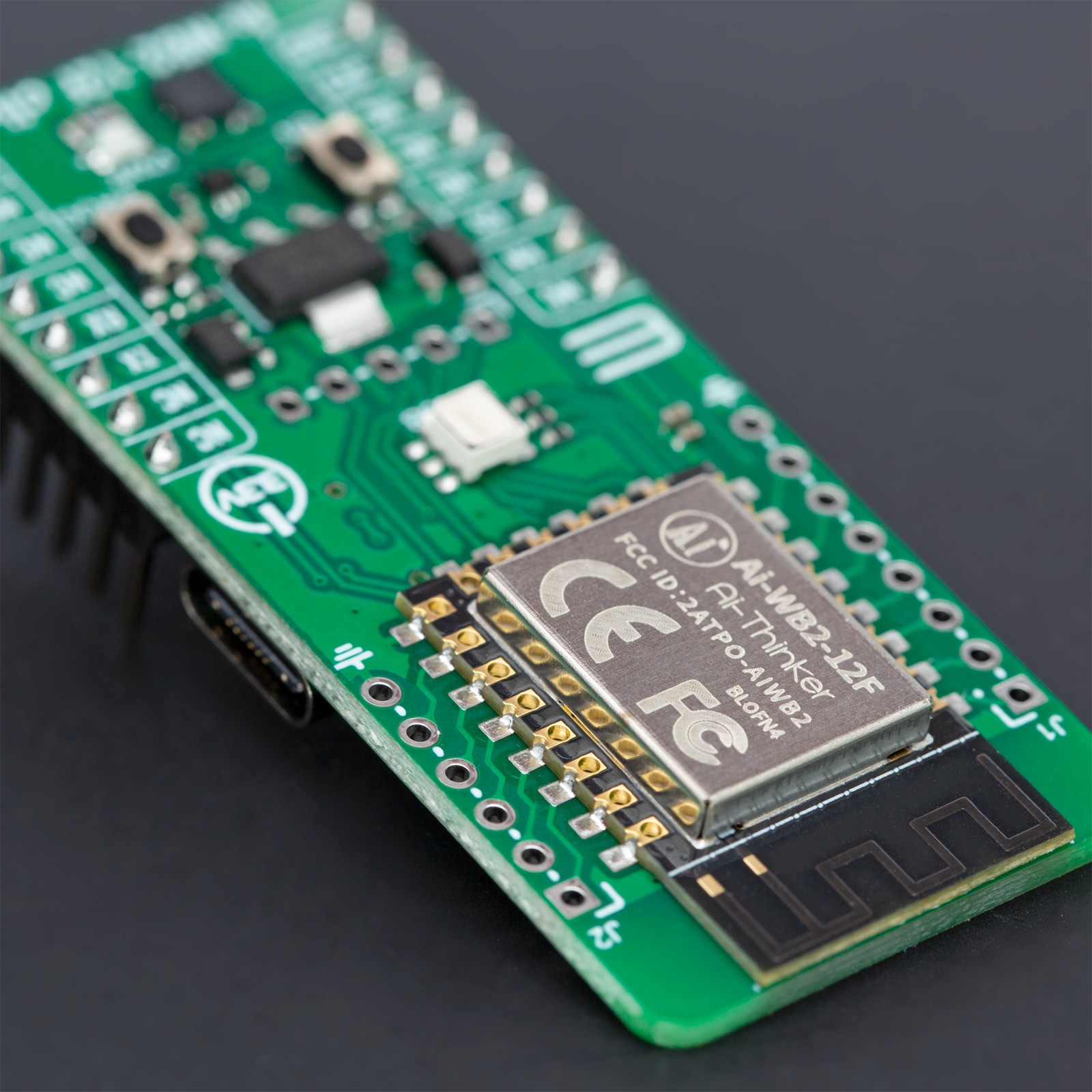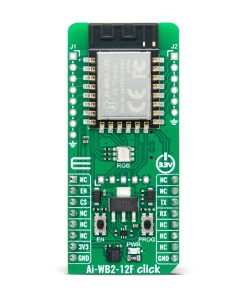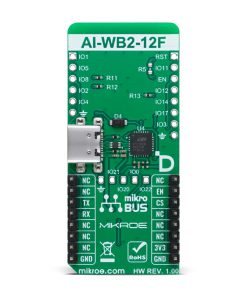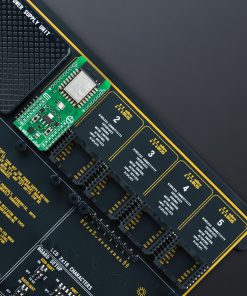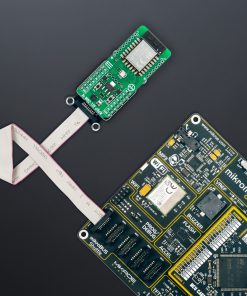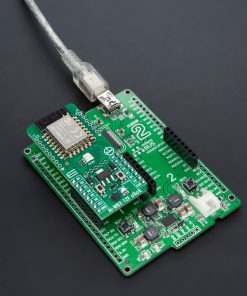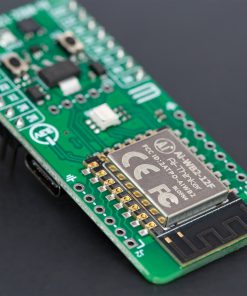Ai-WB2-12F Click
R425.00 ex. VAT
Ai-WB2-12F Click is a compact add-on board for easy integration into the Internet of Things (IoT) and smart home applications. This board features the Ai-WB2-12F, a WiFi and BLE module from Ai-Thinker Technology, powered by the BL602 chip supporting WiFi 802.11b/g/n and BLE 5.0 protocols. With a low-power 32-bit RISC CPU, 276KB of RAM, and various peripheral interfaces, it is well-equipped for a wide range of development projects. The module has an inbuilt PCB antenna, extensive WiFi security protocols, and many operational modes, making it highly efficient for power-sensitive applications. It also supports secure boot, AES encryption, and a public key accelerator, which ensures safe operation. This Click board™ is perfect for developers who need WiFi and BLE for their projects, providing a simple and secure platform for creating IoT, wearable, and smart home devices.
Ai-WB2-12F Click is fully compatible with the mikroBUS™ socket and can be used on any host system supporting the mikroBUS™ standard. It comes with the mikroSDK open-source libraries, offering unparalleled flexibility for evaluation and customization. What sets this Click board™ apart is the groundbreaking ClickID feature, enabling your host system to seamlessly and automatically detect and identify this add-on board.
Stock: Lead-time applicable.
| 5+ | R403.75 |
| 10+ | R382.50 |
| 15+ | R361.25 |
| 20+ | R347.65 |

